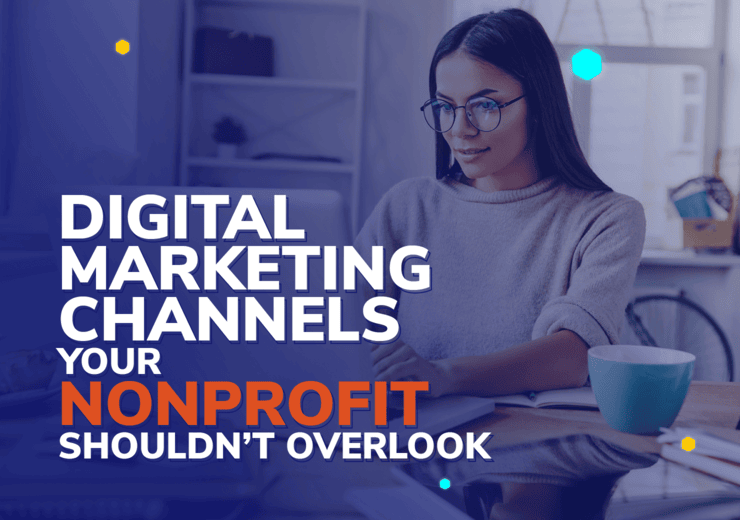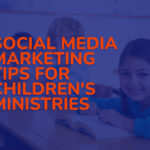Digital Marketing Channels Your Nonprofit Shouldn’t Overlook

 Every digital touchpoint is a chance to strengthen your relationship with supporters. When your website, emails, and other platforms work together, they create a consistent, inspiring multi-channel journey for your community.
Every digital touchpoint is a chance to strengthen your relationship with supporters. When your website, emails, and other platforms work together, they create a consistent, inspiring multi-channel journey for your community.
Yet many nonprofits approach multiple channels without a clear strategy, spreading themselves thin across platforms or overlooking key channels that could meaningfully contribute to awareness and engagement. By focusing on a handful of the most impactful nonprofit digital marketing channels, your team can build stronger supporter relationships and make every message count.
Below, we’ll explore five channels that nonprofits should not ignore—plus best practices for using them to reach, engage, and mobilize your community.
1. Strengthen Your Nonprofit’s Website
Your website is the foundation of your nonprofit’s digital marketing strategy. Whether someone first discovers you through social media, a search engine, or a fundraising campaign, they’ll likely end up on your site to learn more or take action.
A nonprofit website shouldn’t just be a static board of information. Instead, it should be a dynamic engagement tool—guiding visitors to volunteer, donate, or register for events. To maximize its impact, treat your site as a living platform that evolves alongside your organization.
Ongoing upkeep is essential. As Cornershop Creative’s guide to nonprofit website maintenance points out, a well-maintained site not only stays secure and up-to-date but also provides a smoother experience for visitors, which can increase trust and conversions, like donations, volunteer sign-ups, and event registrations.
Features of an Effective Site
To create an engaging and informative website, follow these best practices:
- Clear navigation: Visitors should be able to find what they need quickly, whether that’s your mission, donation form, or event calendar.
- Mobile responsiveness: With more than half of web traffic coming from mobile devices, your site must look and function well on small screens.
- Engaging visuals and storytelling: Showcase your impact through photos, videos, and compelling stories.
- An active blog or news section: Fresh content about your mission, programs, and impact boosts SEO and gives supporters a reason to come back.
- Tracking and analytics: Monitor how visitors interact with your site to refine your calls to action (CTAs) and navigation.
2. Invest in Email Marketing
Email marketing remains one of the most powerful nonprofit digital marketing channels. Unlike social media platforms, where algorithms dictate reach, your email list is an owned audience, meaning that you have direct access to supporters who’ve already expressed interest in your cause.
Email is also personal. With segmentation and personalization, you can send messages tailored to each supporter’s interests or history with your organization. Automation makes it even easier to build journeys that nurture new subscribers, thank donors, and keep volunteers engaged. Mapping the supporter journey can help you visualize these pathways.
Types of Email Campaigns to Try
Consider experimenting with these types of email campaigns:
- Newsletters: Share organizational updates, upcoming events, and impact stories.
- Appeals: Drive donations by explaining the tangible difference a gift will make.
- Event invitations: Encourage participation and boost attendance with clear details and follow-up reminders.
- Impact updates: Thank donors and show results to strengthen trust and encourage repeat giving.
3. Reach New Audiences With Social Media
Social media is one of the most effective ways for nonprofits to expand awareness and attract new supporters. However, success comes from being strategic—not trying to do everything everywhere all at once. Focus on the platforms where your audience already spends time, whether that’s Instagram, LinkedIn, TikTok, or Facebook, and not platforms that you think you should be using.
As part of any strong nonprofit marketing plan, social media should amplify your message, connect you with new audiences, and drive people back to your website or email list.
One of the most powerful strategies is to empower your biggest supporters to become digital advocates. You’ll multiply your marketing efforts by having them share your message authentically with their own networks.
What Your Nonprofit Should Post
To stand out in crowded feeds, focus on creating content that feels community-driven and authentic to your mission. For example, you might post:
- Behind-the-scenes videos that give supporters a glimpse of your daily work
- Volunteer and donor spotlights that celebrate contributions
- Stories and testimonials from people, animals, or whoever is impacted by your mission
- Live event coverage to build excitement and foster real-time interaction
- CTAs for advocacy campaigns, donations, or event sign-ups
4. Send Texts to Supporters
Text messaging (SMS/MMS) gives nonprofits a direct and personal way to connect with supporters, and the engagement rates speak for themselves. According to the 2025 M+R Benchmarks Report, the average donation page completion rate for fundraising texts reached 11%, an increase from 7.5% in the previous year.
With an incredible 90% read rate within 3 minutes of sending, SMS is one of the most reliable ways to get urgent messages seen. It’s especially effective for time-sensitive communications like urgent appeals, event reminders, and volunteer coordination.
How To Make The Most of Texting
Here are some best practices for nonprofit text marketing:
- Keep it concise. Aim for short, clear messages that get to the point quickly.
- Include a call-to-action. Whether it’s “Donate Now” or “Join Us,” always provide the next step.
- Respect compliance rules. Make sure supporters opt in before receiving texts. To learn more about relevant regulations, see Mogli’s guide to SMS opt-in and opt-out laws.
Want to go deeper? This overview of nonprofit text marketing breaks down use cases, tools, and strategies.
5. Foster Connections with eCards
eCards are a creative, shareable way for nonprofits to deepen supporter connections while spreading awareness. Essentially digital greeting cards, eCards allow supporters to send messages to friends and family while reinforcing your cause.
They can be an effective tool for stewardship and outreach alike, offering something fun and personalized that keeps your mission front of mind. eCards also work well as part of peer-to-peer campaigns. For example, incorporating them into a fundraiser alongside ambassador marketing can help supporters champion your cause and expand your reach.
Ways to Use eCards to Spread Awareness
Here are a few ideas for how nonprofits can use eCards:
- Donor thank-yous: Send a digital card to show appreciation after a gift.
- Cause awareness campaigns: Encourage supporters to share eCards on holidays or awareness days tied to your mission.
- Fundraisers: Offer eCards as part of online fundraisers, letting donors dedicate a gift in someone else’s honor.
- Volunteer recognition: Celebrate contributions with a thoughtful digital card.
For the best results, design eCards with strong visuals, mission-driven messaging, and consistent branding.
Wrapping Up
Nonprofit digital marketing channels are powerful tools for building stronger relationships, raising awareness, and fueling long-term growth. By focusing on your website, email marketing, social media, texting, and eCards, you’ll create a cohesive ecosystem that engages both new and existing supporters.
The key is taking an omnichannel approach. When each channel works together, your nonprofit creates a seamless supporter journey that inspires people to give, advocate, and stay connected for years to come.

